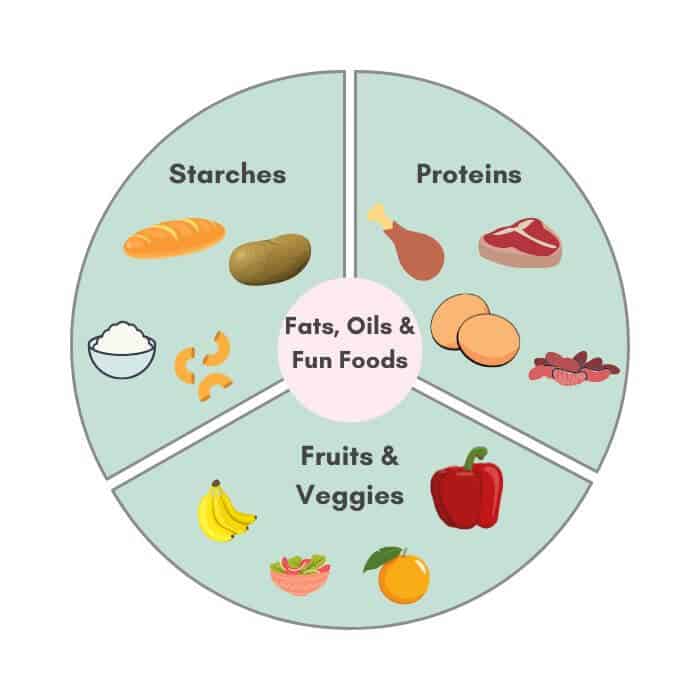Table of Contents
Introduction:
I’ve wanted to discuss the topic of food addiction for a long time, but I knew it would be pretty research heavy for me. I am not an addictions specialist or licensed therapist. I do, however, know a lot about food and stressful relationships with food. I’ve had many clients over the years truly believe they were addicted to certain foods.
The idea of food being addictive is highly complex and debated in the scientific community. Regardless of the consensus, it does not override your own experience with food.
For the sake of this article, I’m going to use the term “food addiction” since that is what it feels like to most of my clients. But please know that this is not a fully understood phenomenon!
Understanding Food Addiction:
The concept of a food addiction dates back to as early as the 19th century. However, the identification of foods with addictive qualities has evolved over time. It started with chocolate, and has rotated through a variety of starchy foods, to what we see in the media today as being the hyper-palatable foods high in salt, sugar, and fat.
The validity of food addiction remains controversial. On the one hand, there are similarities between compulsive eating and the use of addictive drugs. I often hear the scary comparison that ”sugar is more addictive than cocaine”. [Note: this research was done on mice, and had some questionable confounding variables.]
On the other hand, researchers question whether we can inherently be addicted to something critical to survival, like food, water, or air. There is some push for food addiction to be better classified as eating addiction, i.e. a behavioral addiction like gambling rather than a substance use disorder.
One of the challenges with studying food addiction is the lack of a clear definition and diagnostic tool. Historically, studies were done on self-identification of food addiction. This can be tricky because what feels addicting to one person can be totally normal behavior to another. Research required a way to standardize the experience of food addiction.
The Yale Food Addiction Scale (YFAS) was developed to assess addictive-like eating behaviors. It has helped differentiate food addiction from other psychological disorders. That being said, it still isn’t perfect, and some researchers have questioned whether it just identifies those with a more severe form of binge eating disorder.
In my work, I see addictive-like behaviors around food regularly. However, like the researchers have pointed out, it is hard to isolate these behaviors from restriction, dieting, and eating disorders.
All that being said… Sugar and foods high in salt, fat, and sugar DO light up pleasure areas in the brain. However, so do things like exercise, getting enough sleep, and watching the sunrise. So where do we draw the line?
Signs and Symptoms of Food Addiction:
Gordon et al. references the following DSM-V criteria for the diagnosis of an “addiction”:
- Having impaired control around the substance, e.g. consuming more than intended over a period of time
- Impairment of socializing behaviors, e.g. being unable to fulfill work or family obligations
- Risky use of the substance, eg. driving under the influence
- Pharmacological criteria, e.g. requiring a higher dose to achieve the desired effect/building a tolerance
*Note: like I said, I am not a mental health professional and this is outside my scope. Please seek a mental health expert if you are concerned about your behaviors. I’m doing my best to understand this for the sake of this article!
The Yale Food Addiction Scale does its best to capture this criteria and apply it to food. That being said, common behaviors that could be indicative of a potential food addiction include:
- Overeating or binge eating
- Loss of control around certain foods, e.g. eating until physically uncomfortable or sick
- Continued consumption despite negative consequences
- Being unable to cut down on certain foods despite trying
As a dietitian, when I read this, alarm bells sound for disordered eating/and eating disorder. There is significant overlap here. How do we differentiate between an eating disorder and potential food addiction? Researchers are also trying to answer this question.
In my work, this is a critical distinction because eating disorders are treated with the inclusion of foods, while addictions are treated with the exclusion of substances and behaviors. We cannot exclude food when treating an eating disorder. Binges are largely driven by restriction. When my clients follow an adequate and balanced meal pattern, their binging behavior is drastically reduced. So of course I wonder: was it an addiction? Or were they just hungry?
Factors Contributing to Food Addiction:
If we are to assume that it is possible to be addicted to certain foods, we must also recognize that not everyone who eats addictive foods will become addicted. This is true in the same way not everyone who drinks excessively will become addicted to alcohol. There are biological factors, food chemistry effects, psychological and emotional triggers, and sociocultural factors involved.
Biological factors in food addiction
Dopamine signaling and genetics seem to play a role in the development of a food addiction. Highly palatable foods stimulate dopamine activity in animal studies. In humans, folks in larger bodies were found to have fewer dopamine receptors when compared to those in smaller bodies. This suggests that they may need to eat more food in order to achieve the same satiety that someone smaller might need.
Food chemistry and hyperpalatable foods
The availability of hyper-palatable foods has increased over the last 30 years. Hyper-palatable foods are scientifically developed to make you want to eat more of them, and long-term consumption may blunt satiety hormones insulin and leptin.
Note: I share this not to make you fearful of these foods – they can 100% fit into your lifestyle if you like them! It is just one factor involved.
Psychological and emotional triggers
Emotional eating and binge eating are common behaviors used to cope with difficult emotions. If you normally gravitate toward eating as a means to cope with stress or other emotions, this can feel like a food addiction.
Sociocultural factors
Social and cultural norms like dieting can lead one to feel like they are addicted to food. Hunger drives addictive-like eating behaviors as seen in the restrict-binge cycle.
Breaking the Food Addiction Cycle:
As I’ve outlined, the food addiction cycle is incredibly complex. Is your addiction a true addiction, or a manifestation of a diet or some other type of restriction?
Regardless of what you call it, here are some evidence-based strategies for breaking the food addiction cycle!
Follow a meal plan
Eating regular, balanced, and adequate meals is essential. This prevents you from overeating as a result of “primal hunger”. This is a normal phenomenon and I don’t want you to think this is a relapse of your food addiction.
Working with a professional is ideal, but if that isn’t accessible to you, try following the rule of threes:
- Eat 3 meals per day
- Eat 3 snacks per day
- Eat every 3 hours
And make sure your meals are balanced, i.e. they contain carbohydrates, protein, fat, and enough volume to fill you up.

Practice mindful eating
Tune in to your hunger and fullness cues, especially the more subtle ones. Many times my clients are familiar with the extremes – extreme hunger and extreme fullness. But the ones in the middle get lost. Start to recognize what early hunger feels like.
Develop additional coping mechanisms
When you feel yourself turning to food as a coping mechanism, it is helpful to have alternatives in your toolkit. Brainstorm alternative activities that can keep your attention when you feel yourself giving into your food addiction.
Examples include:
- Take a walk
- Journal
- Take a bath
- Read a book
- Do a puzzle
- Visit a coffee shop
- Learn a new skill
- Clean your house
Build a support system
Having support is essential! I’d love it if everyone would be able to work with a dietitian, therapist, medical provider, and recovery coach. Unfortunately, that’s not often the case. Your support team can also look like friends, family, professionals on social media, and even pets.
Should you eliminate your trigger foods?
Whether you should eliminate your trigger foods depends on a few factors. What it comes down to is whether it feels emotionally safe for you to have these foods around, and whether it is physically safe for you to exclude them.
If it’s only a few foods, I’d say it’s ok to eliminate them for a short period if you want to. I think it is helpful to unpack how you’d like these foods to fit in your life. Do you want to eliminate them forever? Is that realistic, or even desirable? There is a chance you can eat these foods again in the future without feeling out of control.
If you do not want to eliminate them, that’s perfectly ok, and honestly my preference when I work with clients. If this feels scary, try putting “guide rails” in place. For instance, have them alongside a full meal, when you’re in the company of others, or in limited quantities (so long as there is enough overall food for you).
If your trigger foods are actually entire food groups, like carbohydrates for instance, I would not suggest eliminating them. This is not a healthy or helpful approach. Working with a dietitian can help ensure you get the nutrition you need while navigating this.
Creating a Healthy Relationship with Food:
I’ve worked alongside individuals trying to heal their relationship with food for years. There is no right way to do this. The keys that stand out to me include the inclusion of a variety of foods, balanced meals, adequate food, and a huge amount of self compassion and patience. If this means excluding certain foods that you feel addicted to, that is totally ok!
Check out my post all about intuitive eating if you want to learn more!
Conclusion
Food addiction is a complex and often misunderstood phenomenon. While the scientific community debates its validity, the experiences of individuals who feel addicted to certain foods are real and significant. Recognizing the signs and symptoms of food addiction, understanding its contributing factors, and employing strategies to break the cycle can be essential steps toward recovery. As always, seeking professional support can make a meaningful difference in your relationship with food!
